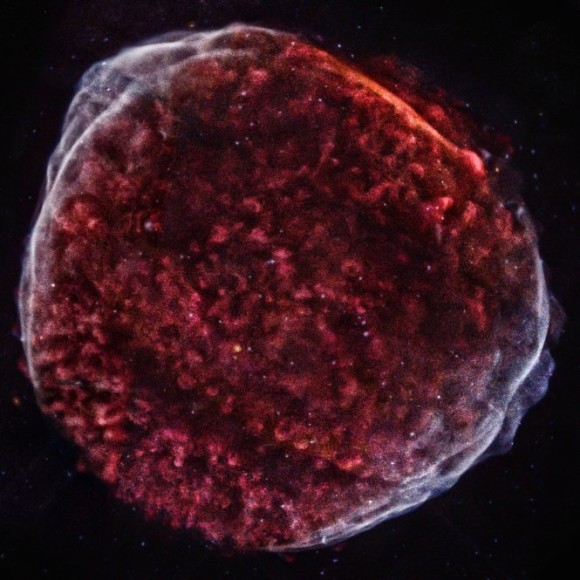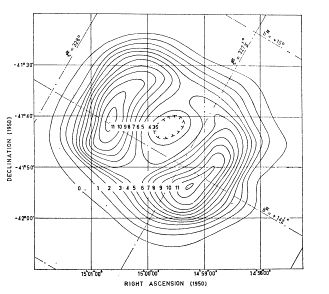X-rays are a form of electromagnetic radiation: a form of starlight our eyes cannot see and that cannot penetrate Earth’s atmosphere. The first X-ray imaging telescope was launched into space in 1963, and thus, throughout 2013, astronomers are celebrating 50 years of X-ray astronomy. Today (April 17, 2013), NASA released the image below from its current X-ray flagship, the orbiting Chandra X-ray Observatory, in celebration of 50 years of X-ray astronomy.

This object is called SN 1006, and it has a unique place in science history. On May 1, 1006 A.D., a new star appeared in Earth’s night sky. It was far brighter than Venus and visible during the daytime for weeks. Astronomers in China, Japan, Europe, and the Arab world all documented it. Today, we know it was a supernova, or colossal explosion of a white dwarf star, which sent its star material hurtling into space.

It wasn’t until 1965 that the supernova remnant from this explosion – a vast cloud of debris that has been expanding for 10 centuries – was identified, first at radio wavelengths. In that year, Doug Milne and Frank Gardner used the Parkes radio telescope to demonstrate that the previously known radio source PKS 1459-41, near the star Beta Lupi, had the appearance of a 30-arcminute circular shell, much as you would expect from an expanding cloud of debris. Read Milne and Gardner’s paper here.
Also in the 1960s – when scientists were able to launch instruments and detectors above Earth’s atmosphere to observe the universe in X-rays – this supernova remnant, now called SN 1006, immediately made itself known. It was one of the first X-ray sources to be detected by the first generation of X-ray satellites.
Bottom line: A new image from NASA’s Chandra X-Ray Observatory of supernova remnant SN 1006, in celebrated of 50 years of X-ray astronomy.











